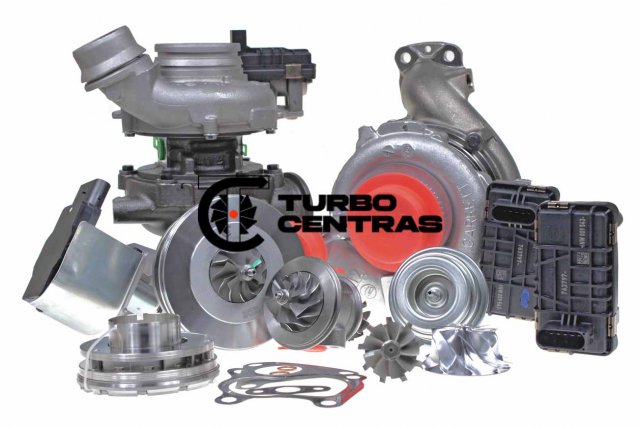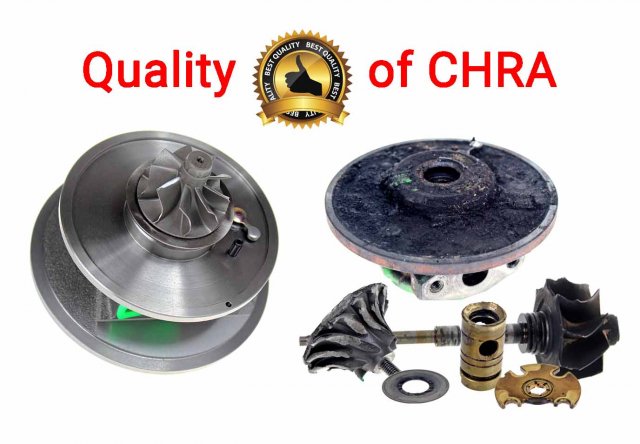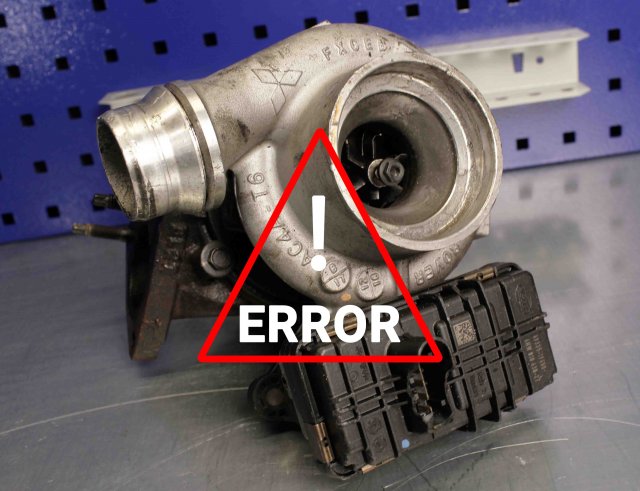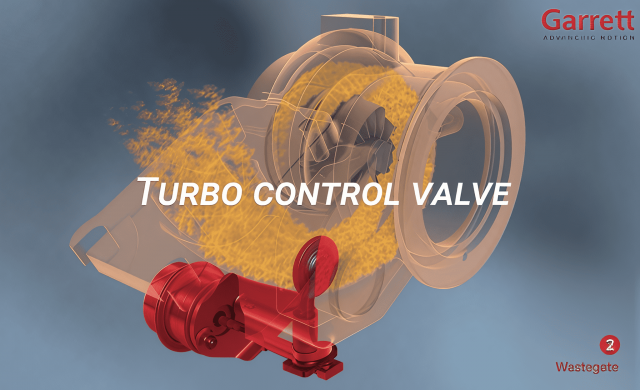Spare Parts Quality: A Brief Guide from Wiatreo on How We Test, Choose, and Recommend
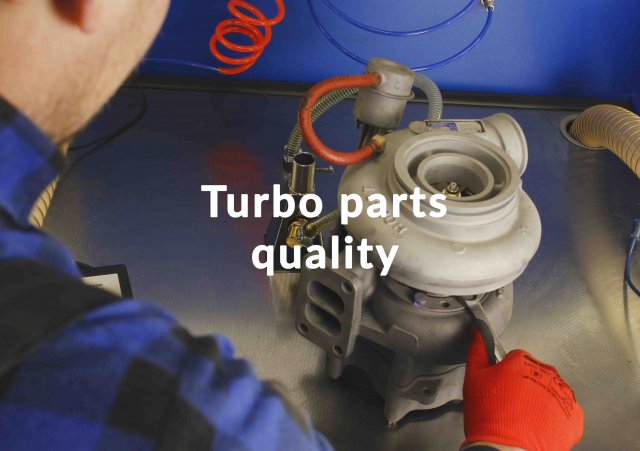
Quality of parts — one of the most difficult parameters to control in the turbocharger market. Despite the abundance of offers from different brands, original components are extremely rare, and some items don't enter free circulation at all. This creates an illusion of choice, where the extensive offering comes with a strict limitation: either a rare original or an analog — with varying degrees of quality. In fact, a market has already formed in which aftermarket parts predominate. But a specific definition of what stands behind the phrase "high-quality analog" has not yet emerged.
Wiatreo company knows how this market works from the inside. Our specialists evaluate it from the position of those who are deeply immersed in the processes of turbocharger regeneration, testing, and selling turbine parts. In this article, we will explain why this situation has developed, what risks are hidden behind attractive prices, and how to distinguish truly quality parts.
Original vs. analog: what's behind the shortage of original turbocharger parts?
Original turbocharger parts are components manufactured by the same companies that make the components installed in turbines during factory assembly of the car.
It is on the basis of such components that strict OEM (Original Equipment Manufacturer) parts standards were formed, which set the benchmark quality for parts.
What does the wording "OEM parts" mean? This is not necessarily produced at the same factory as the turbocharger itself. The main thing is that it is manufactured under the manufacturer's license, according to their technical documentation and in compliance with all specifications: alloy composition, geometry precision, temperature and mechanical resistance, processing and balancing standards.
Despite the high level of trust in such components, the availability of original parts on the market remains limited. Why is this happening?
- Limited production. OEM manufacturers, such as BorgWarner, Garrett, IHI, Mitsubishi and others, focus on producing new turbochargers. Parts for them are produced in volumes sufficient only for assembly and service needs. Surpluses not used in primary equipment are distributed mainly between official services and a narrow circle of dealers. Therefore, only a limited number of original quality parts for turbine repair enter the free market.
- High cost. Original parts cost significantly more than analogs. This is justified: each element undergoes multi-stage quality control, is tested in laboratories and on stands, receives certification, and also carries the brand's margin load. But for used cars, such a purchase may be economically unjustified — especially in cases where the cost of an original quality turbocharger part is comparable to the price of the car.
- Logistics difficulties. OEM components are manufactured at certified factories around the world, often in Southeast Asia, Europe, Mexico, or Turkey. Centralized distribution and limited volumes make them difficult to access in open sales. It is impossible to guarantee the availability of a complete set of original quality parts for turbines in every city or even country.
That is why the market is actively developing from companies whose commercial goal is focused specifically on the production of components for turbines, not whole units. These companies have a different business model and a different understanding of priorities. Some strive to comply with all OEM parameters and confirm this with quality standards (for example, according to GVO), others place emphasis on accessibility and price.
How to distinguish a quality analog from a frankly weak one? How to check the quality of a substitute before buying? This will be covered in the following sections.
Quality of parts: who determines it and by what rules?
To ensure transparency and standardization, the European Union has introduced a system for classifying the quality of parts based on the GVO (Gruppenfreistellungsverordnung) regulation.
What is GVO?
GVO is a European Union regulation aimed at ensuring competition in the automotive industry. It allows independent manufacturers and services to offer alternative parts and services, provided certain quality standards are met. This means that consumers can choose between original and alternative parts without losing their warranty if the alternative parts meet the established requirements.
Classification of parts quality: O, Q, P
According to GVO, turbocharger parts are classified as follows:
O - original components supplied by the car manufacturer and marked with its logo.
Q - parts manufactured by the same manufacturer as the original ones, but without the car manufacturer's logo. They meet the same quality standards and are often used in the primary assembly of cars.
P - alternative components, the quality of which is claimed by the manufacturer to be comparable to the original. However, they may differ in materials and production technology.
Additional quality markings: PJ, PC
In some cases, additional designations are used:
PJ - parts recommended by the supplier as particularly reliable among aftermarket options.
PC - analog parts that have undergone additional certification by independent institutes, such as TÜV or Centro Zaragoza.
Why is GVO parts quality important when choosing components for turbochargers?
Turbines operate under conditions of high temperatures and loads, so using Q category parts can be a reasonable choice, as they correspond to the originals in quality but cost less. However, when choosing P category parts, you need to trust only proven manufacturers.
To navigate in practice, we recommend using this table:
| Feature | Possible category |
|---|---|
| Manufacturer is the same as the original, but without the brand logo | Q |
| Manufacturer is a third-party company, but indicates "OEM compliance" | P |
| Direct car manufacturer logo, supplied through a dealer | O |
| Low price, no certificates, no manufacturer information | Z (informally), potentially unreliable |
How to know which quality category a part belongs to?
In open sources, the quality category of a turbine part (O, Q, P, Z) is almost never directly indicated — neither on the packaging nor in the description. This is not mandatory marking, as the categories were introduced not for the consumer, but as a tool for legal regulation under the GVO (EU Regulation No. 461/2010).
However, such information is still used by the manufacturer for marketing purposes to confirm the origin of their product. Therefore, many brands still declare this:
- in internal catalogs of distributors and services operating according to the GVO standard;
- in supplier documentation, if they position their products as "equivalent to OEM";
- in official communications, where it is noted that the products comply with the OEM standard or are recognized as equivalent.
Same on the outside — different on the inside: how to distinguish a quality turbocharger part from a counterfeit?
What distinguishes a quality part from one that will fail under the first load? At first glance — nothing: the same dimensions, identical shape, even the packaging looks similar to the original. But if you disassemble the turbine by units and look deeper, it becomes obvious: the quality of parts is determined not by appearance, but by alloys, machining precision, and production discipline.
In this section, we will examine in detail what important parts of a turbocharger actually consist of — shaft, compressor wheel, CHRA, repair kits, variable geometry, and actuator. We will show in photos how seemingly insignificant savings lead to failure, and what you should really pay attention to when choosing components.
Turbine shaft: the alloy decides everything
At first glance, two identical shafts may not differ in any way — the same dimensions, the same mass, the same blade shape. However, everything depends on the composition of the metal — the percentage of nickel in the alloy. It determines the heat resistance and resistance of the part to deformation.
If the alloy does not contain enough nickel, the shaft loses rigidity under load, and the blades can bend even without mechanical impact — solely from temperature.
In parallel, the technology of connecting the shaft to the turbine wheel is also important. Companies that are responsible for quality use:
- friction welding — due to friction between elements with pressure and speed control;
- laser welding — for precision metal melting and strong compression.
The choice of technology depends on the chemical characteristics of the materials. But saving on welding or heat treatment is a direct path to unexpected breakage under load.
Compressor wheel: where not only shape matters, but also structure
The production of an analog impeller begins with modeling based on original parts. Quality analogs are created through 3D scanning, alloy selection, and test castings. Models that have passed aerodynamic and thermal tests go into serial production.
Most often, manufacturers use cast aluminum alloy, less often — with the addition of titanium (for example, in motorsport and for engines designed to work in extreme temperature conditions). Not only the material matters, but also the type of casting. The method of gravity die casting under pressure in a steel mold is considered technologically correct. Only in this way can accurate geometry with uniform metal density be achieved. After casting comes mandatory milling, which gives the exact shape.
If you save on the alloy or abandon the final machining, the compressor wheel will:
- lose shape under load;
- give less air volume to the engine;
- cause imbalance in the turbine.
Repair kits: the quality of rings is especially important
What you definitely can't save on are the sealing rings that keep the required pressure and oil inside the cartridge. Manufacturers who are responsible for quality use the powder casting method — sintering metal powders, which allows obtaining high-strength and wear-resistant parts.
If low-density alloys (M1 instead of M2) are used in production or if the metal mesh structure is incorrect, the ring can:
- burst under load;
- leak oil;
- cause imbalance of the entire system.
But to achieve the most rigid fixation, for example, Turbocentras uses rings with a lock. Many cheap analogs use rings without a lock, which increases the risk of oil leakage.
1) O-ring without lock
2) O-ring with lock
CHRA: a complex unit requiring perfect balance
The cartridge connects all rotating and holding elements of the turbine. It sets the stability of operation. Weak points:
- Assembly type — often manufacturers limit themselves to one quick check.
- Clearances — large gaps between the shaft and bearings lead to rapid wear.
- Shaft nut — if overtightened, there is a direct risk of failure; if undertightened, the compressor wheel will come off.
- Bench testing of oil supply — mandatory to guarantee operability, this is a resource-intensive procedure neglected by manufacturers of cheap parts.
- Balancing - most manufacturers don't have a single standard. The turbine in terms of revolutions simply has to "fit into the range."
At Turbocentras, cartridges are balanced to indicators as close as possible to zero, which is important, in conditions close to real ones.
Variable geometry system: precision to tenths of a millimeter
Variable geometry blades operate in extreme conditions — at temperatures around 900 °C. Their thickness at the ends can be only 0.8 mm, and any deviation from technology or cost-cutting in production leads to bending, jamming, or loss of response.
The main requirement is the exact entry of nickel into the alloy, as well as the precision of processing each movable segment, as this is a multi-component part.
Actuators: small details on which everything depends
The operability and wear resistance of a vacuum actuator are directly related to the quality of the membrane and spring. If the membrane material is not elastic enough or the spring is weak, the rod is not retracted to the desired position and the turbine does not work properly.
As for electronic actuators, everything depends on the quality of the internals — motor, reducer (the so-called "worm"), potentiometer, and bearings. In budget analogs, these elements are often made of cheap metals and plastic, not designed for prolonged operation in conditions of high temperature and vibration. Very often the design of aftermarket actuators differs from the original: they are supplied assembled and are not repairable. If one of the elements fails, it is impossible to replace it — you will have to purchase the entire unit again.
Made in China: why this cannot be avoided and how to stop fearing the ubiquitous inscription?
The phrase Made in China has long ceased to be a marker of low quality, although the stereotype is still alive. In fact, today China is not just the "world's factory" but a major player in global production, including the field of auto parts for turbines.
Almost all components for turbochargers in the aftermarket segment are manufactured in China. And it's not just about the low cost of labor. The country has created exceptionally attractive conditions for locating production: modern technical base, access to raw materials, flexible logistics, government investments in industrial infrastructure.
But the main thing is that the quality of parts produced in China is determined not by the country of origin, but by the customer. It all depends on:
- who designs the part;
- what technical requirements the customer imposes;
- whether the task of phased production control is set — from casting to balancing.
As a result, two parts manufactured "on neighboring streets" in the same Chinese city can differ radically: one will be fully high-quality and compliant with OEM standards, the other — compromised in alloy and geometry, but at an affordable price.
Many Chinese factories operate according to ISO/TS 16949, TÜV, and other European standards — if the customer requires it. Therefore, you should not be afraid of the Made in China inscription. It is much more important to ask the right questions: in which country is the brand registered and what standards is it oriented towards.
Price ≠ quality: how cheap solutions turn out to be expensive
Not everyone is ready to install exclusively original components — and this is reasonable. Categories of parts Q and P open the market for quality alternatives. But in this system, there is a fine line: if the analog does not meet the basic quality criteria, it ceases to be a "reasonable economy" and becomes the cause of repeated repairs. Below are three of our cases that show what happens when this line is not seen or ignored.
Case 1: "After repair — back to repair"
Situation: A diesel estate car was brought to the service with complaints of hum and loss of traction. The turbine was changed just 9 months ago to an "affordable analog."
What was discovered: The problem was the destruction of the sealing ring made of low-quality alloy. Oil got onto the hot part, an imbalance began, the compressor wheel touched the housing. As a result — replacement of not only the repair kit but also the entire cartridge.
Conclusion: Saving on the "internals" resulted in repeated repairs and complete replacement — taking into account the work, it cost 2.5 times more than initially installing a quality Q-kit.
Case 2: "The cartridge that didn't survive the summer"
Situation: A rebuilt turbine with an inexpensive Chinese cartridge was installed on a new car. After 7 thousand km, noise appeared, responsiveness disappeared, a boost error occurred.
What was discovered : The shaft axis turned — the nut was undertightened, causing the impeller blades to catch the housing. The turbine was not subject to re-regeneration. The car was returned on a tow truck.
Conclusion: Undertightening and the absence of bench testing cost the owner 400 € and a loss of warranty. A typical case of consequences of low quality P parts.
Case 3: "The actuator was replaced — the turbine remained 'deaf'"
Situation: The client ordered the replacement of the actuator with an electronic analog, choosing an inexpensive non-original model. The installation was quick, but it gave no effect — the traction did not return.
What was discovered : The internal reducer did not give the exact angle of movement, and the motor reacted with a delay. The built-in potentiometer did not match the control map. As a result, the control unit was working "blindly."
Conclusion: Impossibility of calibration, lack of repairability, and incompatibility — and again the purchase of a new actuator, this time original or compatible with the Q part quality standard.
Recommendations from Wiatreo: when part quality is not a slogan, but a system
Our company daily encounters the results of ill-considered decisions. As a result, all these turbochargers, rebuilt using low-quality components, return for repair too quickly. Everything is predictable — if parts not designed for real loads are used during repairs, this is not a solution to the current problem, but a temporary postponement of a new emergency situation.
That is why we consciously give priority to products from Turbocentras — a European manufacturer of analog P-class parts that does not save on alloys, balancing, or geometry. It supplies parts that meet quality standards and have been tested by us in real conditions.
We are convinced: it is better to do quality work once than to save 20-30% today, only to face the same malfunction again in six months, but with doubled expenses.

